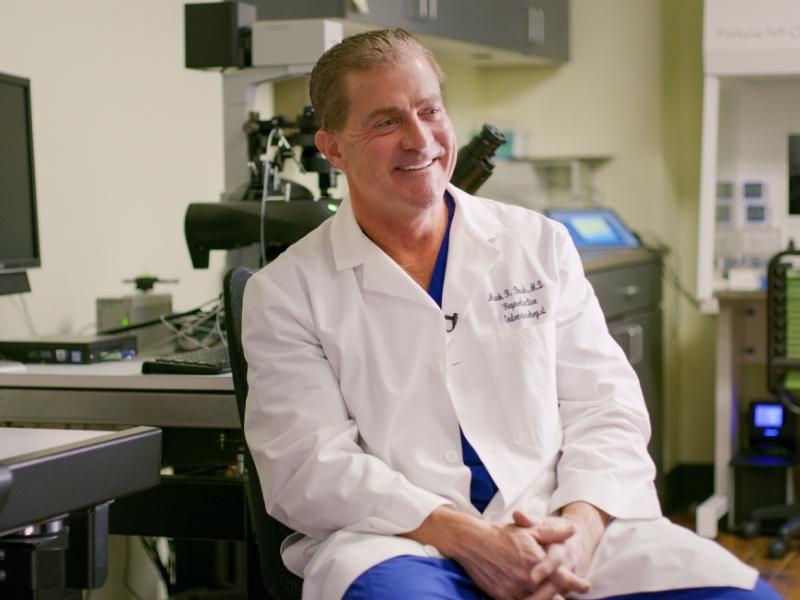Basic infertility evaluation involves evaluation of the eggs, sperm, uterus and fallopian tubes as well as a complete medical history.
Egg testing involves consideration of the age of the patient, ultrasound and blood testing – usually AMH. Ultrasound can evaluate the ovaries and often a count of the resting eggs or follicles is performed. Although values vary by age and other factors, optimal egg health is usually seen in patients with about 8-10 resting follicles.
Semen analysis evaluates, among other things, the number (concentration), shape (which relates to the DNA of the sperm), and motility (mobility) of the sperm.
Evaluation of the uterus is performed by ultrasound, hysterosalpingogram (more below) and often with hysteroscopy.
A hysterosalpingogram (HSG) uses a X-ray and contrast dye to demonstrate that the fallopian tubes are open (also known as patent). Usually a HSG will also provide information about the uterine cavity. Diagnostic hysteroscopy uses a small camera and water to visualize the uterine cavity and is usually regarded as the best (most sensitive) test for evaluation of the inside of the uterine cavity.
Thyroid and vitamin D levels may also be evaluated for in the initial infertility testing .
Menstrual history, demonstrating a normally occurring and regular menstrual cycle (every 25 – 35 days) is almost always demonstrative of ovulation.
In most cases, the above basic testing will provide invaluable information regarding the potential cause of infertility and most importantly, facilitate effective treatment.


